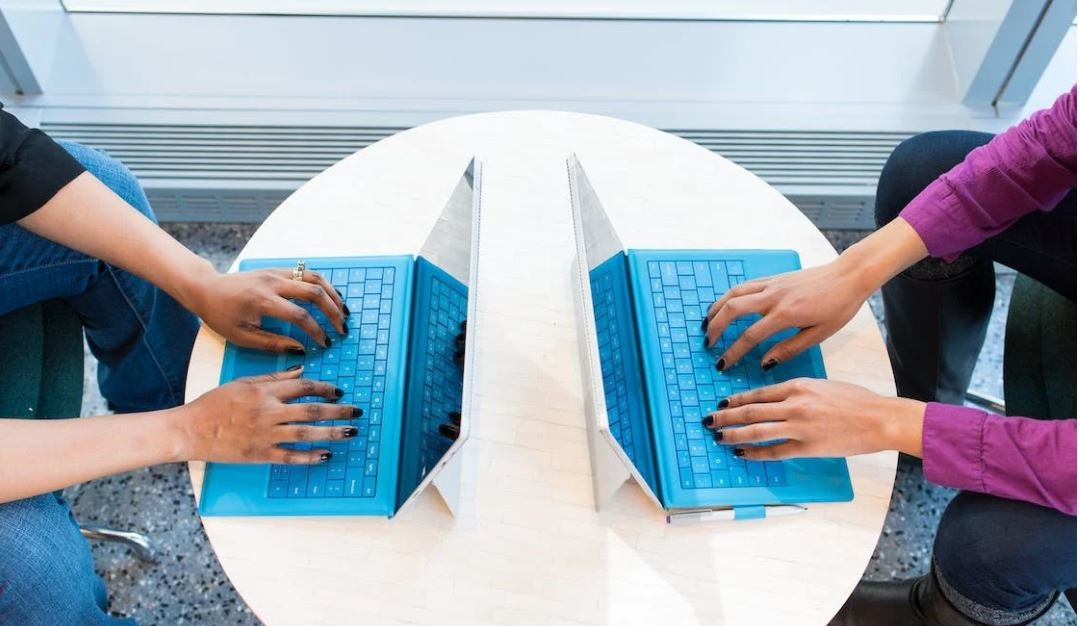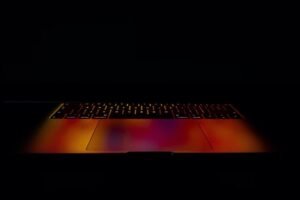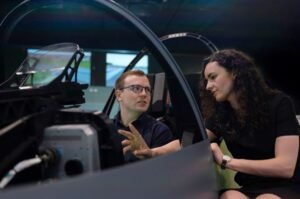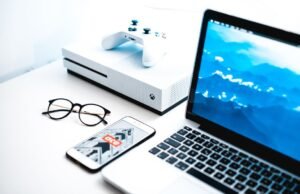Artificial Intelligence Art
The intersection of art and technology has led to the emergence of a captivating field known as artificial intelligence art. This innovative discipline explores the utilization of AI technologies to create original works or enhance traditional artwork. By employing algorithms and machine learning techniques, AI art showcases the abilities of machines to manifest creative expression.
Key Takeaways
- Artificial intelligence art is an exciting field that combines technology and creativity.
- AI technologies such as algorithms and machine learning are utilized in creating and enhancing artworks.
- AI art highlights the capabilities of machines to express creativity.
In recent years, AI art has gained significant attention from both the art community and technology enthusiasts. Artists and researchers have embraced the potential of AI technologies to revolutionize art production and explore entirely new artistic realms. Through the use of neural networks and deep learning algorithms, these AI systems can analyze vast amounts of data, identify patterns, and generate original artistic outputs. Such capabilities have sparked a growing interest in understanding the creative processes of artificial intelligence.
It is fascinating to witness machines autonomously generating unique artworks with innovative techniques.
Exploring AI Art
The realm of AI art encompasses various approaches, ranging from generative art to the integration of AI algorithms in traditional artistic practices. Generative art involves using algorithms to create artwork that can continuously evolve, self-assemble, or respond to environmental stimuli. Artists can develop these algorithms to generate visual or audio creations that surprise and engage viewers in unique ways. Additionally, AI algorithms have also been applied to enrich traditional artworks by augmenting them with AI-generated elements or enabling interactive experiences.
- Generative art involves using algorithms to create evolving and responsive artwork.
- AI algorithms can augment traditional artworks and enable interactive experiences.
| AI Art Techniques | Description |
|---|---|
| Neural Style Transfer | AI algorithms apply the style of one image to another, resulting in visually striking combinations. |
| GANs (Generative Adversarial Networks) | Two neural networks work together, with one generating content and the other evaluating and refining it, leading to astonishing results. |
| Machine-Generated Art | AI systems autonomously generate original, unique, and sometimes unpredictable artworks. |
One captivating AI art technique is neural style transfer. By leveraging deep neural networks, this technique can apply the visual style of one image to another, producing visually striking combinations. The output can range from recreating a famous artwork with a modern twist to merging distinct visual styles into captivating new compositions.
Another method widely utilized in AI art creation is GANs (Generative Adversarial Networks). GANs involve two neural networks working together: the generator network creates content, while the discriminator network evaluates and refines it. This interplay yields remarkable output, showcasing the ability of AI to generate realistic and imaginative artwork.
AI Art in the Contemporary World
AI art has garnered attention in the contemporary art scene, with renowned artists and institutions incorporating AI techniques into their creative processes. This fusion has sparked fascinating collaborations between human artists and AI systems, leading to innovative and thought-provoking results. The increasing interest and acceptance of AI-created artworks have opened up new avenues for creativity and challenged traditional notions of authorship in the art world.
- AI art has gained recognition in contemporary art and has been embraced by renowned artists and institutions.
- Collaborations between human artists and AI systems have yielded innovative and thought-provoking artworks.
- The acceptance of AI-generated art has challenged traditional notions of authorship in the art world.
| AI Art Installations | Description |
|---|---|
| The Next Rembrandt | An AI system analyzed Rembrandt’s works to generate a convincing new painting in the style of the master painter. |
| A House of Dust | An early AI artwork that combined computer-generated poetry with visualizations. |
| Portrait of Edmond de Belamy | Created by GANs, this AI-generated artwork was sold at an auction for a significant price. |
AI art installations have pushed the boundaries of creativity by leveraging the power of algorithms and human collaboration.
Notable examples of AI art installations include “The Next Rembrandt,” where an AI system analyzed Rembrandt’s works to generate a convincing new painting in the style of the renowned master painter. Similarly, “A House of Dust” combined computer-generated poetry with visualizations, blurring the boundaries between traditional art forms and new media. Moreover, “Portrait of Edmond de Belamy,” created using GANs, made waves in the art world when it was sold at an auction for a significant price.
AI art is a dynamic field with limitless potential for further exploration and innovation. As technologies advance, the boundaries between human creativity and the capabilities of machines continue to blur. Artists and researchers are continually discovering new ways to leverage artificial intelligence to push the boundaries of artistic expression. This fusion of technology and art holds promise for the future, offering exciting opportunities for both artists and enthusiasts to engage with AI as a creative tool.
Artificial Intelligence Art
The intersection of art and technology has led to the emergence of a captivating field known as artificial intelligence art. This innovative discipline explores the utilization of AI technologies to create original works or enhance traditional artwork. By employing algorithms and machine learning techniques, AI art showcases the abilities of machines to manifest creative expression.
Key Takeaways
- Artificial intelligence art is an exciting field that combines technology and creativity.
- AI technologies such as algorithms and machine learning are utilized in creating and enhancing artworks.
- AI art highlights the capabilities of machines to express creativity.
In recent years, AI art has gained significant attention from both the art community and technology enthusiasts. Artists and researchers have embraced the potential of AI technologies to revolutionize art production and explore entirely new artistic realms. Through the use of neural networks and deep learning algorithms, these AI systems can analyze vast amounts of data, identify patterns, and generate original artistic outputs. Such capabilities have sparked a growing interest in understanding the creative processes of artificial intelligence.
It is fascinating to witness machines autonomously generating unique artworks with innovative techniques.
Exploring AI Art
The realm of AI art encompasses various approaches, ranging from generative art to the integration of AI algorithms in traditional artistic practices. Generative art involves using algorithms to create artwork that can continuously evolve, self-assemble, or respond to environmental stimuli. Artists can develop these algorithms to generate visual or audio creations that surprise and engage viewers in unique ways. Additionally, AI algorithms have also been applied to enrich traditional artworks by augmenting them with AI-generated elements or enabling interactive experiences.
- Generative art involves using algorithms to create evolving and responsive artwork.
- AI algorithms can augment traditional artworks and enable interactive experiences.
| AI Art Techniques | Description |
|---|---|
| Neural Style Transfer | AI algorithms apply the style of one image to another, resulting in visually striking combinations. |
| GANs (Generative Adversarial Networks) | Two neural networks work together, with one generating content and the other evaluating and refining it, leading to astonishing results. |
| Machine-Generated Art | AI systems autonomously generate original, unique, and sometimes unpredictable artworks. |
One captivating AI art technique is neural style transfer. By leveraging deep neural networks, this technique can apply the visual style of one image to another, producing visually striking combinations. The output can range from recreating a famous artwork with a modern twist to merging distinct visual styles into captivating new compositions.
Another method widely utilized in AI art creation is GANs (Generative Adversarial Networks). GANs involve two neural networks working together: the generator network creates content, while the discriminator network evaluates and refines it. This interplay yields remarkable output, showcasing the ability of AI to generate realistic and imaginative artwork.
AI Art in the Contemporary World
AI art has garnered attention in the contemporary art scene, with renowned artists and institutions incorporating AI techniques into their creative processes. This fusion has sparked fascinating collaborations between human artists and AI systems, leading to innovative and thought-provoking results. The increasing interest and acceptance of AI-created artworks have opened up new avenues for creativity and challenged traditional notions of authorship in the art world.
- AI art has gained recognition in contemporary art and has been embraced by renowned artists and institutions.
- Collaborations between human artists and AI systems have yielded innovative and thought-provoking artworks.
- The acceptance of AI-generated art has challenged traditional notions of authorship in the art world.
| AI Art Installations | Description |
|---|---|
| The Next Rembrandt | An AI system analyzed Rembrandt’s works to generate a convincing new painting in the style of the master painter. |
| A House of Dust | An early AI artwork that combined computer-generated poetry with visualizations. |
| Portrait of Edmond de Belamy | Created by GANs, this AI-generated artwork was sold at an auction for a significant price. |
AI art installations have pushed the boundaries of creativity by leveraging the power of algorithms and human collaboration.
Notable examples of AI art installations include “The Next Rembrandt,” where an AI system analyzed Rembrandt’s works to generate a convincing new painting in the style of the renowned master painter. Similarly, “A House of Dust” combined computer-generated poetry with visualizations, blurring the boundaries between traditional art forms and new media. Moreover, “Portrait of Edmond de Belamy,” created using GANs, made waves in the art world when it was sold at an auction for a significant price.
AI art is a dynamic field with limitless potential for further exploration and innovation. As technologies advance, the boundaries between human creativity and the capabilities of machines continue to blur. Artists and researchers are continually discovering new ways to leverage artificial intelligence to push the boundaries of artistic expression. This fusion of technology and art holds promise for the future, offering exciting opportunities for both artists and enthusiasts to engage with AI as a creative tool.

Common Misconceptions
Artificial Intelligence
One common misconception about artificial intelligence is that it will replace humans in the workforce and lead to widespread unemployment. However, this is not entirely true. While AI has the potential to automate certain tasks, it is more likely to augment human work rather than replace it completely. AI systems can assist humans in performing tasks more efficiently and accurately, allowing them to focus on higher-level problem-solving and creative thinking.
- AI can enhance productivity by automating repetitive and mundane tasks
- AI can enable humans to focus on tasks that require emotional intelligence and interpersonal skills
- AI can create new job opportunities in fields related to AI development and maintenance
Another misconception is that AI possesses human-like intelligence and consciousness. While AI has made significant advancements in areas such as natural language processing and image recognition, it does not possess consciousness or self-awareness. AI systems are designed to process and analyze data to make decisions or perform tasks, but they lack the depth of understanding and awareness that humans possess.
- AI systems are designed for specific tasks and lack general intelligence
- AI systems do not have emotions or subjective experiences
- AI systems rely on well-defined algorithms and data, unlike human intuition and common sense
There is a misconception that AI is infallible and always produces accurate results. However, AI systems are not entirely error-free. They are trained using datasets, and the accuracy of their outputs depends on the quality and diversity of the data they are trained on. If the input data is biased or incomplete, the AI system may produce biased or flawed results. It is crucial to monitor and evaluate the performance of AI systems to ensure they are making reliable decisions.
- AI systems are only as good as the data they are trained on
- AI systems can be biased if the training data is biased
- AI systems may produce inaccurate results if they encounter scenarios outside their training data
People often assume that AI is a technology of the distant future and has limited applications at present. However, AI is already integrated into various aspects of our daily lives and industries. From voice assistants like Siri and Alexa to recommendation systems on e-commerce platforms, AI is prevalent. Its applications range from healthcare and finance to transportation and entertainment. The potential for AI advancements is vast and will continue to reshape how we live and work.
- AI is already revolutionizing healthcare with applications in disease diagnosis and drug development
- AI-powered recommendation systems contribute to personalized user experiences on platforms like Netflix and Spotify
- AI plays a crucial role in autonomous vehicles and improving transportation safety
Lastly, there is a misconception that AI will become self-aware and surpass human intelligence, leading to a dystopian future, as depicted in science fiction movies. While AI has great potential, achieving true human-level general intelligence remains a challenge. The development of AI is guided by ethical considerations and strict regulations to ensure its responsible use. The focus is on using AI as a tool to enhance human capabilities rather than creating a superior intelligence that could pose a threat.
- The development of AI follows ethical guidelines and regulations to prevent misuse or dangerous outcomes
- AI systems lack self-awareness and consciousness, limiting their potential for surpassing human intelligence
- The focus of AI research is on augmenting human capabilities, not creating a rival intelligence
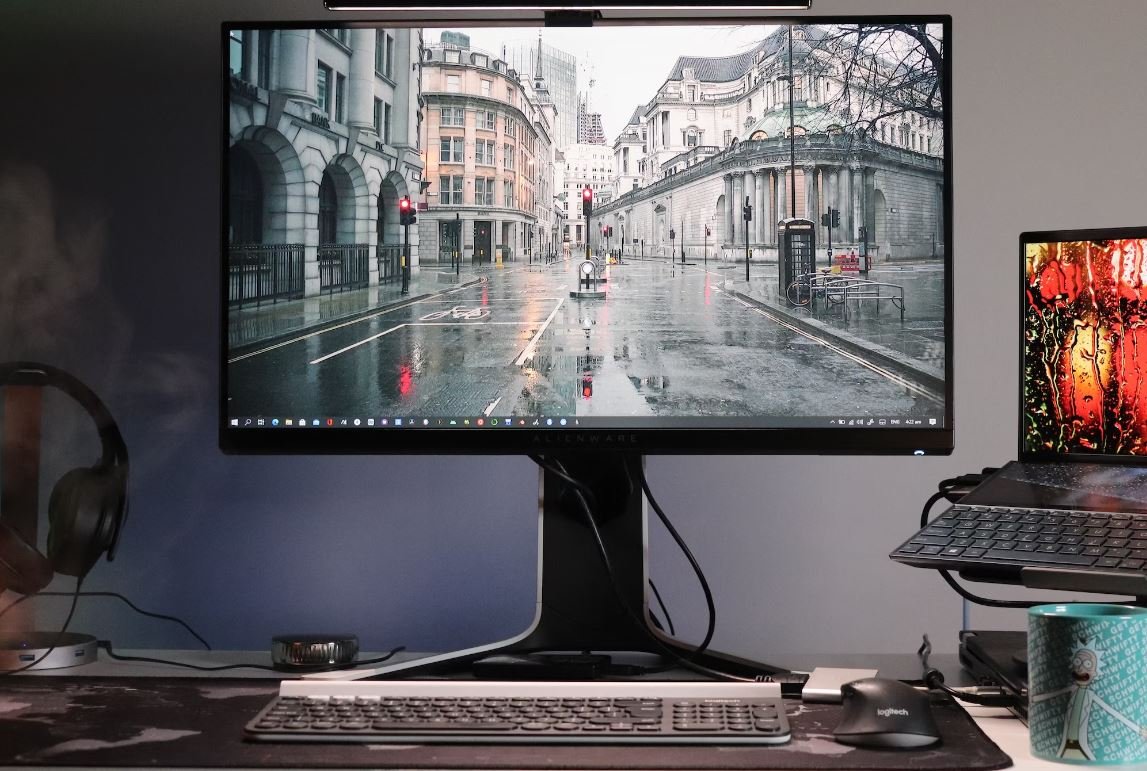
Artificial Intelligence Art
Artificial Intelligence (AI) has revolutionized various industries, including the world of art. Through the integration of AI and creativity, artists and programmers have collaborated to produce mesmerizing works of art. This article showcases fascinating examples of AI-generated art, demonstrating the boundless capabilities of technology in the realm of creativity.
A Robot’s Masterpiece: “The Aesthetic Algorithm”
Behold “The Aesthetic Algorithm,” an AI-generated painting that captivates audiences with its intricate patterns and vibrant colors. Designed by a collaborative effort between an artist and an AI, this artwork encapsulates the fusion of human creativity and machine intelligence.
A Symphony of Pixels: “Pixelated Harmonies”
“Pixelated Harmonies” represents the harmonious marriage between music and art, generated entirely by an AI system. Utilizing complex algorithms, this AI-driven composition creates a stunning visual representation of a symphony, showcasing the potential of AI in the artistic realm.
Dynamic Sculptures: “Sculptural Synthesis”
“Sculptural Synthesis” breaks the boundaries of traditional sculpture by utilizing AI algorithms to generate dynamic and ever-changing physical forms. This fusion of technology and art challenges conventional notions of sculptural expression, emphasizing the limitless possibilities offered by AI.
AI Portraits: “Enigmatic Faces”
The series of “Enigmatic Faces” unlocks the AI’s ability to recreate human-like portraits. By analyzing vast amounts of facial data, the AI creates hauntingly realistic portraits that blur the lines between human and machine, inviting viewers into a world where AI becomes an artist.
Landscapes from the Ether: “Digital Dreamscape”
“Digital Dreamscape” transports viewers to surreal and ethereal landscapes that exist solely within the realm of digital art. AI algorithms generate these dreamlike vistas, showcasing the potential of AI to create awe-inspiring environments that transcend reality.
AI-Enhanced Photorealism: “Hyperrealistic Horizons”
“Hyperrealistic Horizons” demonstrates the power of AI in enhancing photorealistic paintings. By applying advanced image recognition algorithms, AI software takes ordinary photographs to new heights, creating paintings that appear indistinguishable from reality.
Collage of Emotions: “The Emotional Spectrum”
“The Emotional Spectrum” explores the AI’s ability to comprehend and convey human emotions. By using sentiment analysis algorithms, AI transforms raw emotional data into captivating visual representations, opening a window into the complex realm of human feelings.
Abstract Realities: “Divergent Dimensions”
“Divergent Dimensions” invites viewers to venture into abstract realms that defy traditional artistic principles. AI algorithms generate vibrant and chaotic compositions, challenging artists and enthusiasts to explore new artistic frontiers beyond traditional boundaries.
The Melting Clockwork: “Surreal Mechanics”
Inspired by the works of Salvador Dali, “Surreal Mechanics” is an AI-generated masterpiece that combines the fantastical with the mechanical. This artwork blurs the lines between reality and the imagination, showcasing AI’s unique talent for surrealistic expression.
Evolution of Colors: “Chromatic Evolution”
“Chromatic Evolution” illuminates the culmination of AI’s learning process in the world of color. By analyzing and learning from diverse color patterns, AI creates stunning works of art that set the stage for a new era of chromatic exploration.
Artificial Intelligence has remarkably transformed the landscape of art, pushing the boundaries of creativity in countless directions. Through the integration of AI algorithms and artistic vision, the art world is witnessing a paradigm shift that challenges conventional notions of artistic creation.
Frequently Asked Questions
What is artificial intelligence art?
Artificial intelligence art refers to artworks that are created or heavily influenced by artificial intelligence algorithms. These algorithms enable machines to generate or contribute to the creation of artistic content, blurring the boundaries between human and machine creativity.
How does artificial intelligence create art?
Artificial intelligence algorithms can create art by analyzing vast amounts of data, learning patterns, and generating novel outputs. For example, a deep learning neural network can be trained on a dataset of images to create new, unique images, or a generative adversarial network (GAN) can generate new artwork based on training data.
What are the benefits of using artificial intelligence in art?
Using artificial intelligence in art can provide various benefits. It allows artists to explore new creative possibilities, discover unique aesthetics, and challenge traditional notions of authorship. AI can also assist artists in generating ideas, providing inspiration, and automating repetitive tasks, freeing up time for more creative decision-making.
Can artificial intelligence replace human artists?
No, artificial intelligence cannot replace human artists. While AI can create compelling and impressive art, it lacks the emotional depth, intentionality, and personal experience that human artists bring to their work. AI can be seen as a tool or collaborator for human artists, enhancing their creative processes rather than replacing them.
Is AI art considered genuine art?
The question of whether AI art is considered genuine art is subjective and debated among artists, critics, and scholars. Some argue that AI-generated artwork lacks the intentionality and human touch required for authentic artistic expression, while others embrace it as a new form of creative expression that challenges traditional notions of authorship.
Can AI art have copyright protection?
Yes, AI-generated art can have copyright protection. The legal ownership of AI-generated artwork can be attributed to the human artist who trained or programmed the AI algorithm to create the work. However, the legalities surrounding AI art and copyright can be complex and may vary depending on the jurisdiction and the specific circumstances of the creation.
What ethical considerations are associated with AI art?
AI art raises several ethical considerations, such as questions around authorship, intellectual property, and the potential for bias in the algorithms used. Additionally, the impact of AI-generated art on the art market, art history, and cultural trends is also a topic of ethical concern that requires thoughtful exploration and discussion.
How is AI art impacting the art world?
AI art is having a significant impact on the art world. It is challenging traditional notions of creativity, enabling new forms of artistic expression, and expanding the possibilities for collaboration between humans and machines. AI-generated art is also influencing art curation, art sales, and the exploration of emerging digital art mediums.
Where can I see examples of AI-generated artwork?
There are various platforms, exhibitions, and online galleries where you can see examples of AI-generated artwork. Some popular platforms that showcase AI art include Artnome, Art AI Gallery, and the AI Art Exchange. Additionally, museums and art institutions often host exhibitions featuring AI-generated art.
Can I learn to create AI art myself?
Yes, you can learn to create AI art yourself. There are numerous online resources, courses, and tutorials available that can help you get started with AI art creation. Learning programming languages such as Python and familiarizing yourself with machine learning and deep learning concepts will be beneficial in your journey to create AI-generated artwork.

